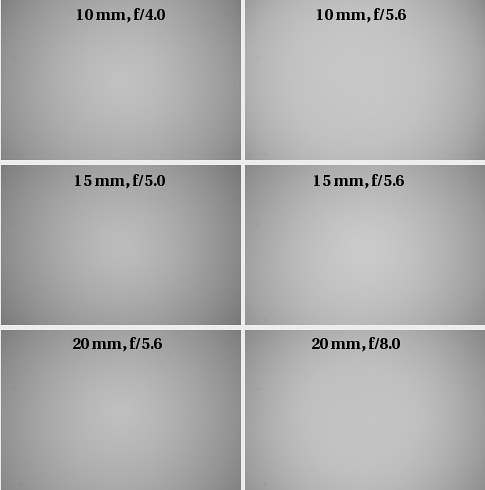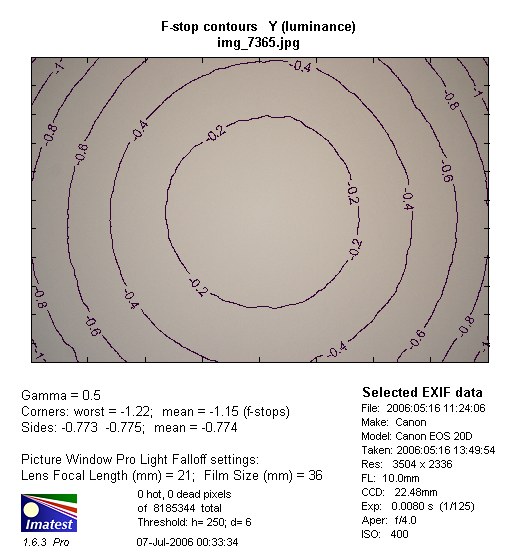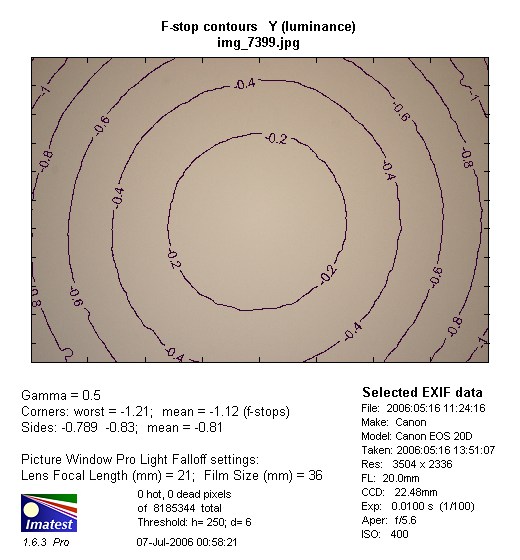Sigma 10-20 mm f/4-5.6 EX DC HSM
8. Vignetting

Unfortunately the Sigma has some problems with the vignetting. Its level high at every focal length and it decreases slowly on stopping down the lens. At 10 mm and maximum relative aperture the light fall-off in the frame corners amounts to 33% (-1.15 EV) and on stopping down to f/5.6 it reaches as much as 25%. Further stopping down helps only slightly because by f/8 we see the decrease to the level of 21% and by f/11 we still reach 15%.
Please Support UsIf you enjoy our reviews and articles, and you want us to continue our work please, support our website by donating through PayPal. The funds are going to be used for paying our editorial team, renting servers, and equipping our testing studio; only that way we will be able to continue providing you interesting content for free. |
- - - - - - - - - - - - - - - - - - - - - - - - - - - - - - - - - - - - - - - - - - - - - - - -
 |
It is even worse at 15 mm. By f/5.0 we have the vignetting level of 35%, by f/5.6 it is still on high level of 30%, by f/8 as high as 26% and by f/11 it is 21%.
Similar situation we have at 20 mm. At the maximum aperture the brightness loss in the corners reaches 32%, by f/8 it's on level of 27%, and by f/11 it is still as high as 22%.
 |
As in the case of the coma, the Sigma’s vignetting is still lower than in the Canon but only at the maximum relative apertures, which are smaller for the Sigma after all. When we compare exactly the same aperture values, though, the Canon fares a tad better.






